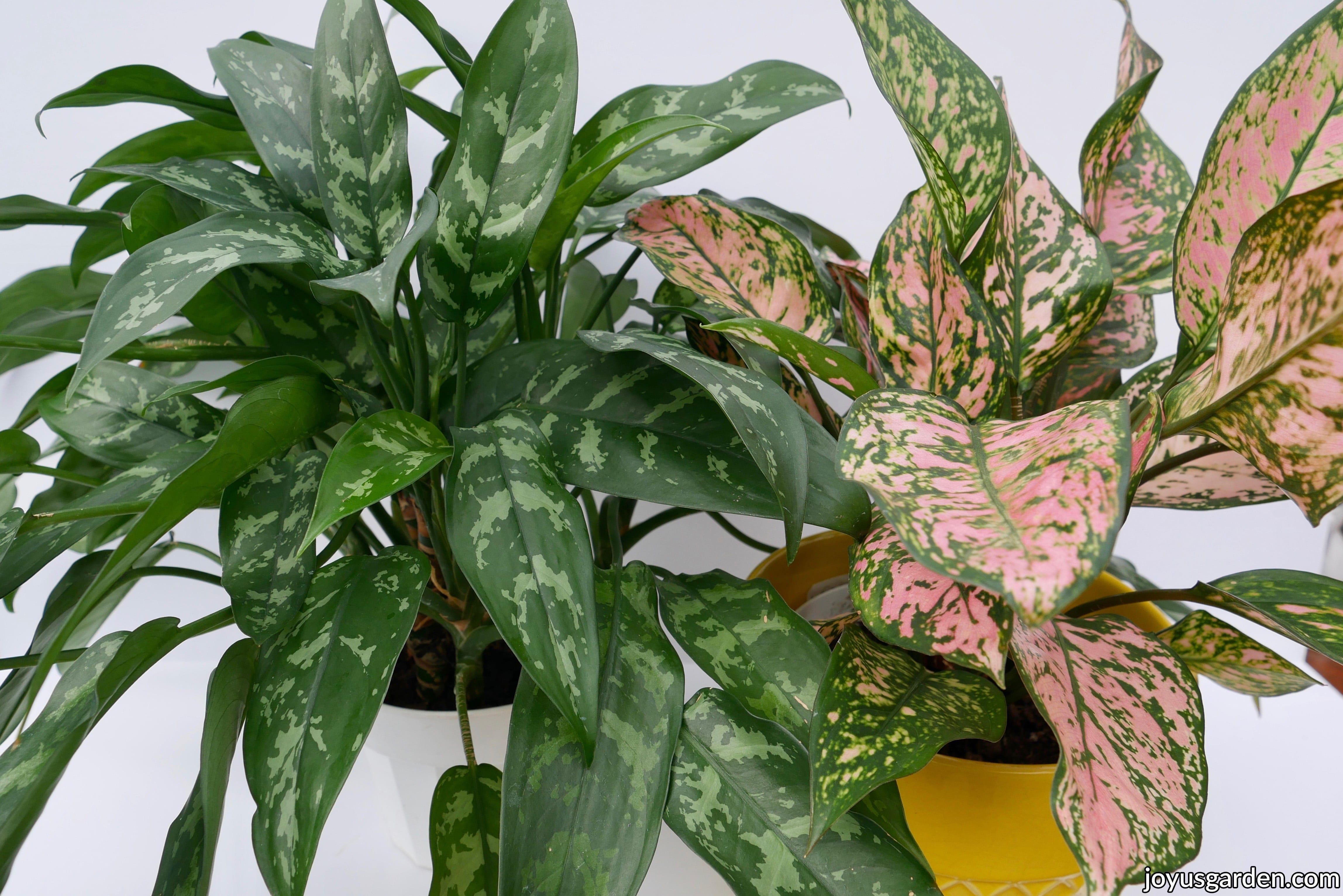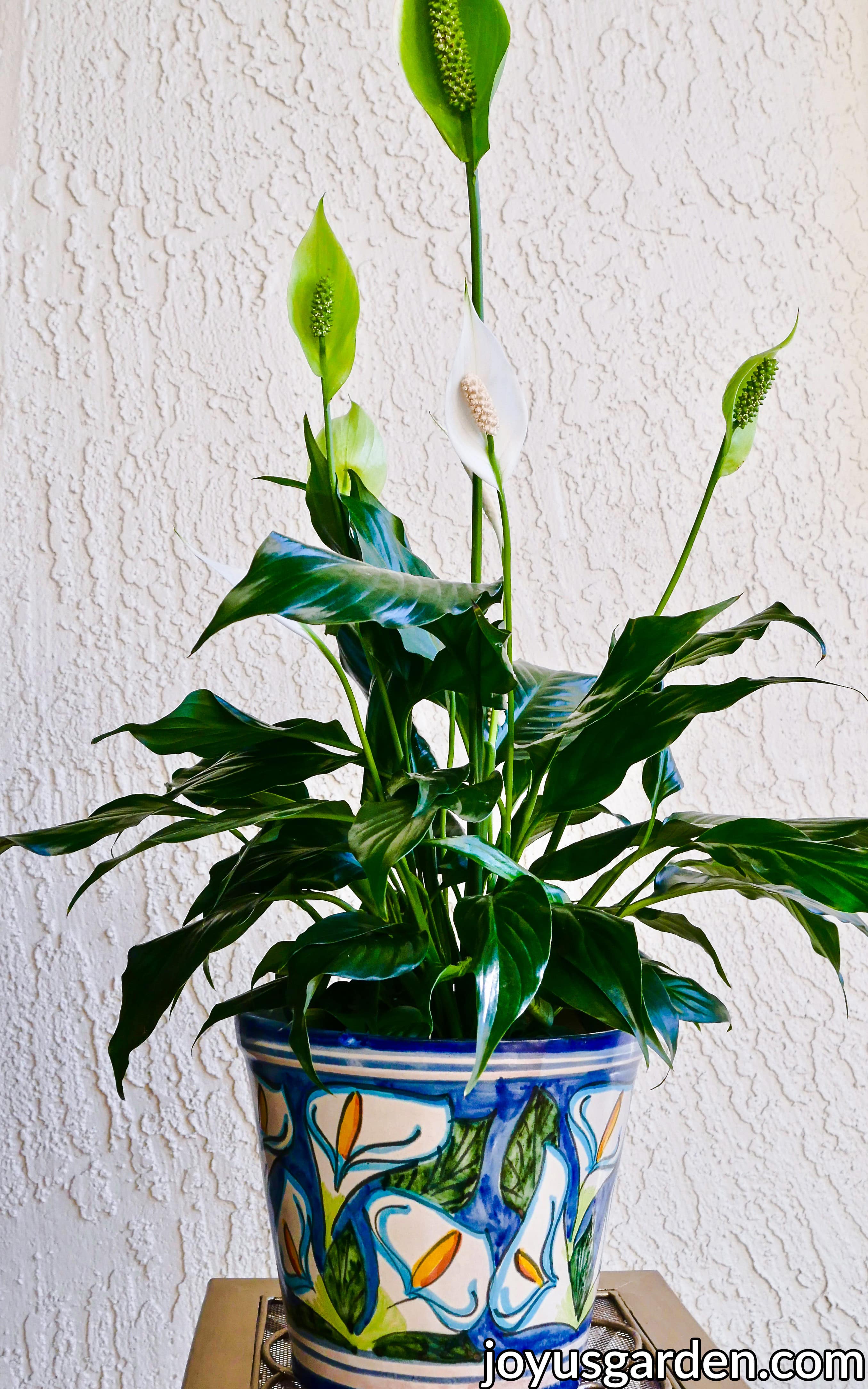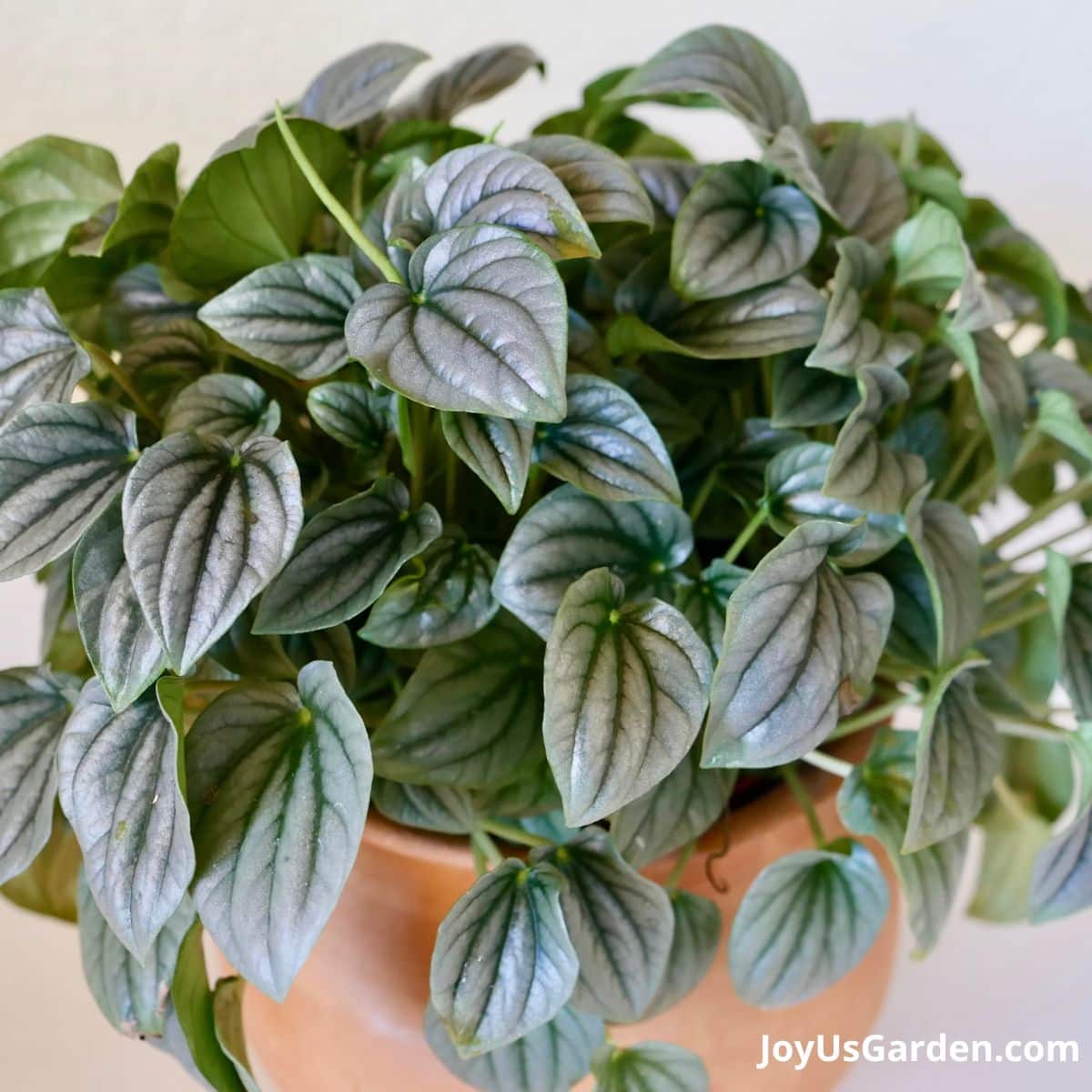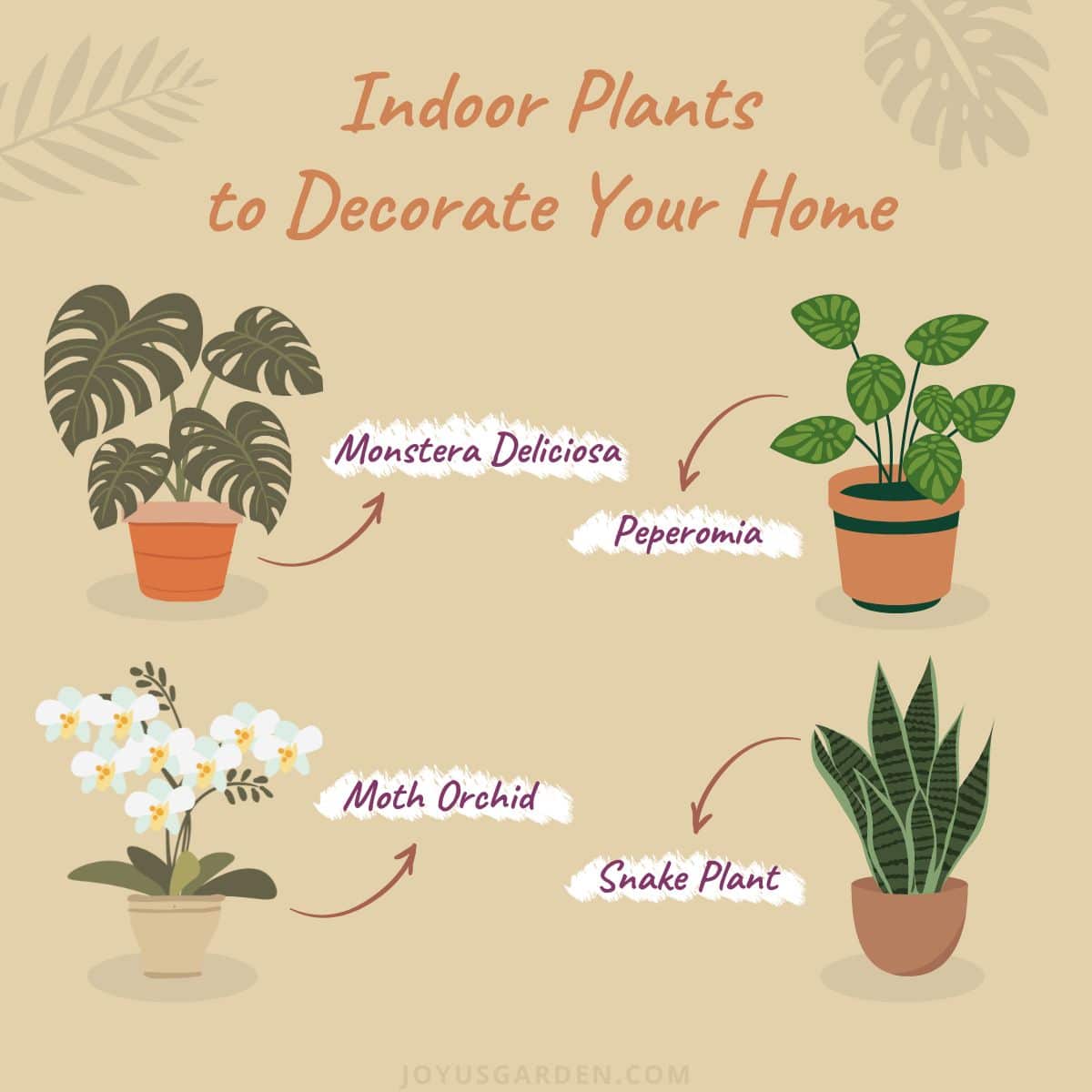Office Desk Plants: Best Indoor Plants for Your Workspace
Take a closer look at these office desk plants. We think you’ll like their robustness and easy maintenance. Not only do they add some much-needed greenery to your workspace, but they can also boost productivity and overall well-being.
Do you work at an office? If so, you probably have your desk and want to make it feel like your space. Here is one idea to help you decorate your office desk: houseplants!
Office plants with decorative containers and pot stands can add style to your workspace, whether at home or outside.
This list of 16 easy office plants includes tried and true favorites, succulents, novelty plants, and blooming plants. Along with being suited for drier indoor environments, you’ll find ones for low, medium, and high light. Most are low maintenance and do best in indirect sunlight.
Quick Tips: Be sure not to overwater your desk plant (too much kindness will do it in!) and keep it out of the hot, direct sun. Although your desk is most likely out of the direct sun, don’t put your plant in a hot window for a little “spa vacation” because it’ll burn.
For the average desk, you want to buy a plant in a 4″ or 6″ grow pot. Anything bigger will take up too much space.
Eye-Catching Office Desk Plants
1.) Snake Plant (Sansevierias, now Dracaenas)


Light Requirements: They sure are versatile in this department! Snake plants prefer medium light (about 10′ away from west or south-facing windows), but they’ll also tolerate both low and high light. Keep them out of the direct sun because the leaves will burn in a heartbeat.
Water Requirements: Snake Plants are succulents, so easy does it in terms of watering. Don’t overdo it because your plant will rot out. Make sure the soil is almost completely dry before thoroughly watering again.
Water your Snake Plants every 2-6 weeks, depending on your office’s temperature, light levels, and humidity. So, if you travel or tend to ignore plants, this is one of the most suitable office plants for you.
Why We Like Them: These spiky beauties can put up with almost anything and are one of the best office plants. They handle dry air like champions and come in various foliage colors, patterns, forms, and sizes.
2.) ZZ Plant

Light Requirements: Moderate or medium light is key for a ZZ Plant to look its best. They’re often billed as low-light plants – they tolerate it but won’t grow much.
Water Requirements: I thoroughly water mine every two weeks or so in summer and every four weeks or so in winter. Like all the other plants listed here, adjust the watering frequency for your office’s conditions.
Why We Like Them: The main draw of a ZZ Plant is its gorgeous, glossy green leaves which will really attract the attention of onlookers. They’re the right plant for someone looking for a low-maintenance plant.
3.) Pothos

Light Requirements: Moderate light is the sweet spot for Pothos plants, especially those with variegation in the leaves. They’ll tolerate low light levels but won’t grow much, if any. The Jade Pothos, with its solid green foliage, handles low light conditions the best.
Water Requirements: It’s best to let the soil go almost dry before watering your Pothos again. Generally, every 7-10 days in summer and every 14 days in winter.
Why We Like Them: Besides being easy to maintain, they’re easy to find and will barely put a dent in your wallet. You can buy a beautiful pothos in a 6-inch pot with long tails for around $20.00.
This is a trailing plant – make sure you have room on your desk for it to spread out and hang down.
4.) Chinese Evergreen (Aglaonemas)

Light Requirements: Many of the Aglaonemas are known for tolerating lower-light conditions. With its deep green foliage, Aglaonema Maria (in the photo above on the left) handles low light levels the best.
Those with color and pattering in their foliage (like the Pink Aglaonema you see on the right) need higher light. Just keep them away from windows with the strong sun coming in, or they’ll burn.
Water Requirements: Water Chinese Evergreen plants when their soil becomes almost dry. That tends to be every 7-9 days in the warmer months and every 10-14 weeks when winter comes around.
Why We Like Them: Chinese Evergreens are the epitome of fabulous foliage and run the gamut regarding color and patterning! Not only are they easy on the eyes, but if you’re a beginning gardener, they’re one of the easy maintenance indoor plants.
5.) Peace Lily (Spathiphyllum)

Light Requirements: Peace Lilies prefer moderate or medium light. They’ll tolerate lower light but look and do better with more. They need brighter light to induce flowering.
Water Requirements: This is one plant that likes regular watering. The top of the soil should dry out before watering again. Never let it go completely dry because the leaves, stems, and flowers will go limp. I water mine every 7 days in summer and every 10-14 days in winter.
Why We Like Them: We love their dark green, glossy foliage, but most of all, the long-lasting white flowers that rise above. It’s best to buy your Peace Lily plant with blooms and buds because getting them to bloom again indoors can be tricky.
6.) Peperomias

Light Requirements: They do best in moderate or medium light conditions. That being said, many Peperomias will tolerate low light and do just fine, but you won’t see much growth.
Water Requirements: You’ll need to water yours every week or 2 in the warmer months and every 2-3 weeks in the winter. Let it go almost dry before watering again.
Why We Like Them: They’re tougher than they look (especially the Baby Rubber Plant) and are available in various leaf textures and colors. They certainly add personality to any home office!
Read about the growing Ripple Peperomia, Peperomia Obusifolia, Watermelon Peperomia, and Peperomia Hope here.
7.) Hoyas

Light Requirements: Hoyas need bright, natural light to do their best. It’s fine to have them near a window but not in it. Just keep them away from hot, sunny windows and direct afternoon sun.
Water Requirements: Hoyas are succulent-like and prefer to be watered again when almost dry. Every 1-2 weeks in summer and every 2-3 weeks in winter is how I water mine.
Why We Like Them: Hoyas run the gamut regarding leaf form, color, and variegation. Some trail more than others, so you’ll need to have room for it to spread out a bit on your desk. They’re little maintenance, long-lasting, durable, and oh-so attractive. What’s not to love?!
We’ve done a couple of posts on caring for these plants. The 1st is a general Hoya Houseplant Care Guide & the other is a Sweetheart Hoya Care Guide.
Succulents as Office Plants
Note: Succulents growing indoors need medium to high light exposure. They store water in their leaves, stems, and roots, so be sure not to over-water them.
Depending on the pot size (smaller pots will need watering more often), the soil mix they’re planted in, and how warm your office is, you’ll only need to water yours every 2-5 weeks.
8.) Aloe Vera

Light Requirements: Indoors, it needs as much light as possible, south or west exposure. Aloe vera, like other succulents, isn’t a low-light plant. The leaves get thinner and droop downwards if it’s not getting the light it needs. Just keep it away from the hot glass (like a west exposure) because it’ll burn. It can be near that hot sunny window but not in it.
Water Requirements: No matter where it grows, you want your Aloe Vera to dry out before watering again. Water it thoroughly and make sure all that water drains out. You don’t want it to be sitting in any water. Indoors, watering once or twice a month will be plenty.
It might need even less in the winter, once every 4-8 weeks. Those fleshy leaves and roots are full of water, so they can easily rot out.
Why We Like Them: These small desk plants are fun to look at and easy to care for. This plant gets by with little water, so be sure not to overwater this popular succulent. And, if you have any skin irritation, just cut off a leaf and use the healing gel.
Check out our Aloe Vera Houseplant Care Guide & Answers To Your Questions On Growing Aloe Vera for more info.
9.) Ponytail Palm

Light Requirements: A Ponytail Palm does best in high light indoors. Just make sure it’s not in any or against any hot windows. It’ll tolerate moderate light levels, but the growth will be even slower. They don’t do well in low light levels.
Water Requirements: Ponytails store water in their bulbous bases and thick roots. Water yours every 3-4 weeks in the brighter, warmer months and every 5-7 weeks in winter.
Why We Like Them: That grass-like foliage that spirals off the trunk makes it a fun plant! Ponytail Palms are tabletop succulents and grow slowly indoors, so they won’t take up too much space. They make great accent plants and the perfect desk plant.
This post on Ponytail Palm Care gives you much more info.
10.) Jade Plant

Light Requirements: As an indoor plant, Jade Plants need as much sun as you can give them. At least six hours if you want yours to do its best. They aren’t suited for low-light conditions, but this is another easy succulent if your office has a sunny spot.
Water Requirements: You want to thoroughly water your Jade Plant no more than every 2-3 weeks in the warmer months. Once every 4-5 weeks is enough in the winter months. They store water in their leaves, stems, and roots like other succulents, making them subject to root rot if kept wet.
Why We Like Them: The thick, fleshy leaves are gorgeous to look at. Looking for something a little more unique? Jades are suitable for bonsai and can be found in different shapes. If your workspace has plenty of light, you can easily grow this plant.
Here’s a guide to Jade Plant Care.
Blooming Office Plants
11.) Bromeliads

Light Requirements: Like many other tropical plants brought indoors, bromeliads like nice, bright light but no prolonged periods of the direct, hot sun. If the light is too low, the flowers won’t properly open.
Water Requirements: Bromeliads like a good watering every month. You can keep the vase (center part of the plant) about 1/4 of the way full of water. If the vase stays full, the plant might rot out.
Why We Like Them: Bromeliads are tough, interesting, and don’t require much fuss. They’re a good choice if you want to add some color. You have many types and colors to choose from – something for everyone!
We’ve done care posts on these popular bromeliads: Aechmeas, Guzmanias, Neoregelias, Pink Quill Plants, Vrieseas, & Cryptanthus as well as this general Bromeliad Care Guide.
12.) Kalanchoes

Light Requirements: Flowering Kalanchoes (Flaming Katy) like bright, natural light. A medium or high light situation is best if they’re not getting too much direct sun. If the light is too low, the flowers won’t open up. And keep them out of any hot windows because they’ll burn.
Water Requirements: These plants are succulents with fleshy leaves and stems, so you don’t want to keep them constantly wet. They need good drainage. Water yours well and then water again when almost dry.
Why We Like Them: They’re succulents that bloom, and boy, do they bloom! Each stem is covered with many flowers, so if you get them when they are partially open, they’ll have a long bloom time.
They make wonderful indoor office plants. Kalanchoes come with single or double flowers in various colors (white, yellow, orange, red, pink, and bi-color), a great way to brighten your office space.
Some Of Our General Houseplant Guides For Your Reference: Guide To Watering Indoor Plants, Beginner’s Guide To Repotting Plants, How to Clean Houseplants, Winter Houseplant Care Guide, Plant Humidity: How I Increase Humidity For Houseplants, Buying Houseplants: 14 Tips For Indoor Gardening Newbies
13.) Phalaenopsis Orchids

Light Requirements: Make sure the light for your Phalaenopsis Orchid is as bright as possible but without any direct sun. Think of a greenhouse with lots of nice, natural light, but the glass is whitewashed to diffuse the sun’s direct rays – that’s the exposure they love. They need this light so the closed flower buds will open up.
Water Requirements: These orchids aren’t as delicate as you might think. Water them every 7-10 days, and like all these other plants, let the water thoroughly drain out of the pot. I sometimes let mine sit in water for five or ten minutes if they need it.
Why We Like Them: Their long-lasting flowers are fascinating, gorgeous, and intriguing. They come in various colors and are a beautiful sight to see! Plus, you can get them to rebloom if the conditions are right.
We’ve done posts on Phalaenopsis Orchid Care and How Often To Water A Phalaenopsis Orchid.
Novelty Office Plants
14.) Lucky Bamboo

Light Requirements: Lucky Bamboo does great in bright light. It’ll tolerate lower light levels just fine but won’t grow much. Avoid putting yours in the direct, hot sun as it’ll burn baby burn.
Water Requirements: Lucky Bamboo is most commonly sold growing in water. Make sure the water completely covers the roots of your Lucky Bamboo stalks or arrangements. You don’t want the roots to go dry. Add water as needed every 7-21 days, depending on the temps.
If the water smells bad, then change it. They prefer distilled water if the tap water has a lot of chlorine and minerals.
Why We Like Them: This plant can grow in water or a soil mix. It’s a great one to start with because it’s easy as pie to keep looking good and sure to become a topic of conversation as you’re busy showing it off. And you can find it in many forms, from straight to twisted to woven. It’s said to bring good luck and good fortune – yes, please!
Are you interested in this plant? Check out Lucky Bamboo Care & 26 Things to Know About Growing Lucky Bamboo In Water.
15.) Air Plants

Light Requirements: Bright, indirect light is best. Air Plants don’t do well in low light or in direct sun.
Water Requirements: It’s best to spray or soak (for 15 minutes) your air plants 1-2 times a week. If your office is even drier, soak or spray them more often and longer.
Why We Like Them: These fascinating beauties are called Air Plants because they don’t grow in soil. They’re more maintenance in terms of watering &/or spraying, but well worth giving one a try. If you don’t have a lot of room on your desk, consider these small plants.
They’re great for creating office decor items if you want something different gracing your desk.
More on Air Plant Care for you.
16.) Haworthias, now Haworthiopsis

Light Requirements: Moderate. Many species of Haworthias have adapted to lower light conditions, making them suitable for interiors.
Water Requirements: Even when growing in small containers, they require little water. I water the Zebra Haworthiopsis pictured above every 14 days in the warm months and every 14-21 days in winter.
Why We Like Them: These succulents are tough! I have many of them growing in my home, and I love their look. You can fit one in almost anywhere, they’re a breeze to maintain, and they rarely have to be repotted.
Here are some of our houseplant guides you may find helpful: Guide To Watering Indoor Plants, Beginner’s Guide To Repotting Plants, 3 Ways To Successfully Fertilize Indoor Plants, How to Clean Houseplants, Winter Houseplant Care Guide, How to Increase Humidity for Houseplants.
Conclusion: We love all of these office plants that are suitable to have on your desk. If you’re a beginning indoor gardener, know that all these plants are subject to over-watering, ie, too often. And, make sure they don’t sit in any water in a saucer or decorative container because this will lead to rot also.
Many of these plants will tolerate lower light but won’t grow much, if at all. You’ll have to rotate your plant every 1-2 months, so it receives light on all sides.
Whether you choose a Pothos or an Air Plant, having a little nature on your desk is a good thing. And most of all, enjoy the life and green goodness your plant(s) bring into your workspace!
Happy Gardening,








Love your blog on the plants. So much great advice. Now I can learn to properly care for house plants. Thank you so much for the information. This is my first time on your blog.
Linda – Welcome to our blog! We have lots of post & videos on houseplants for you to look through. And, there are lots more coming. Nell